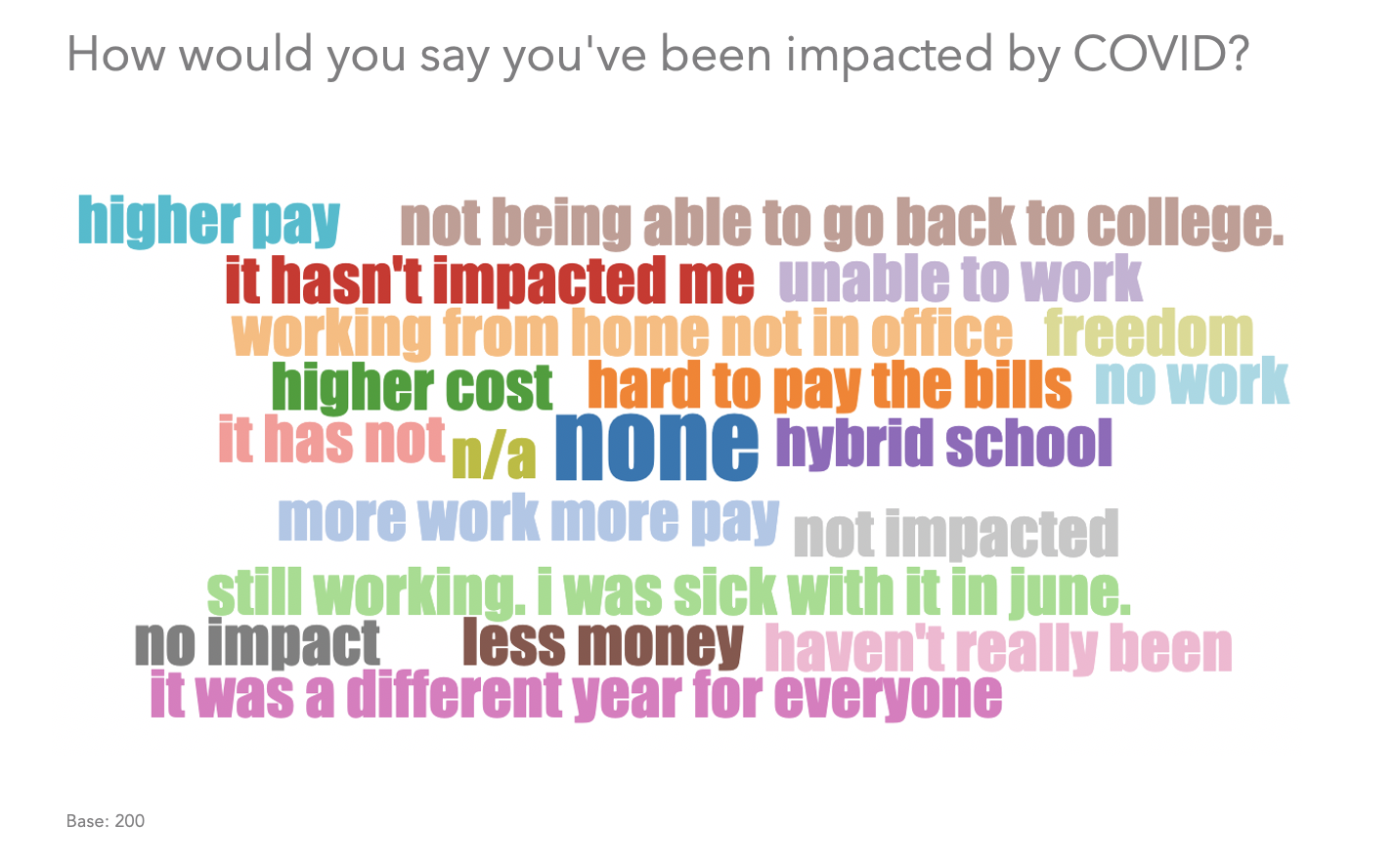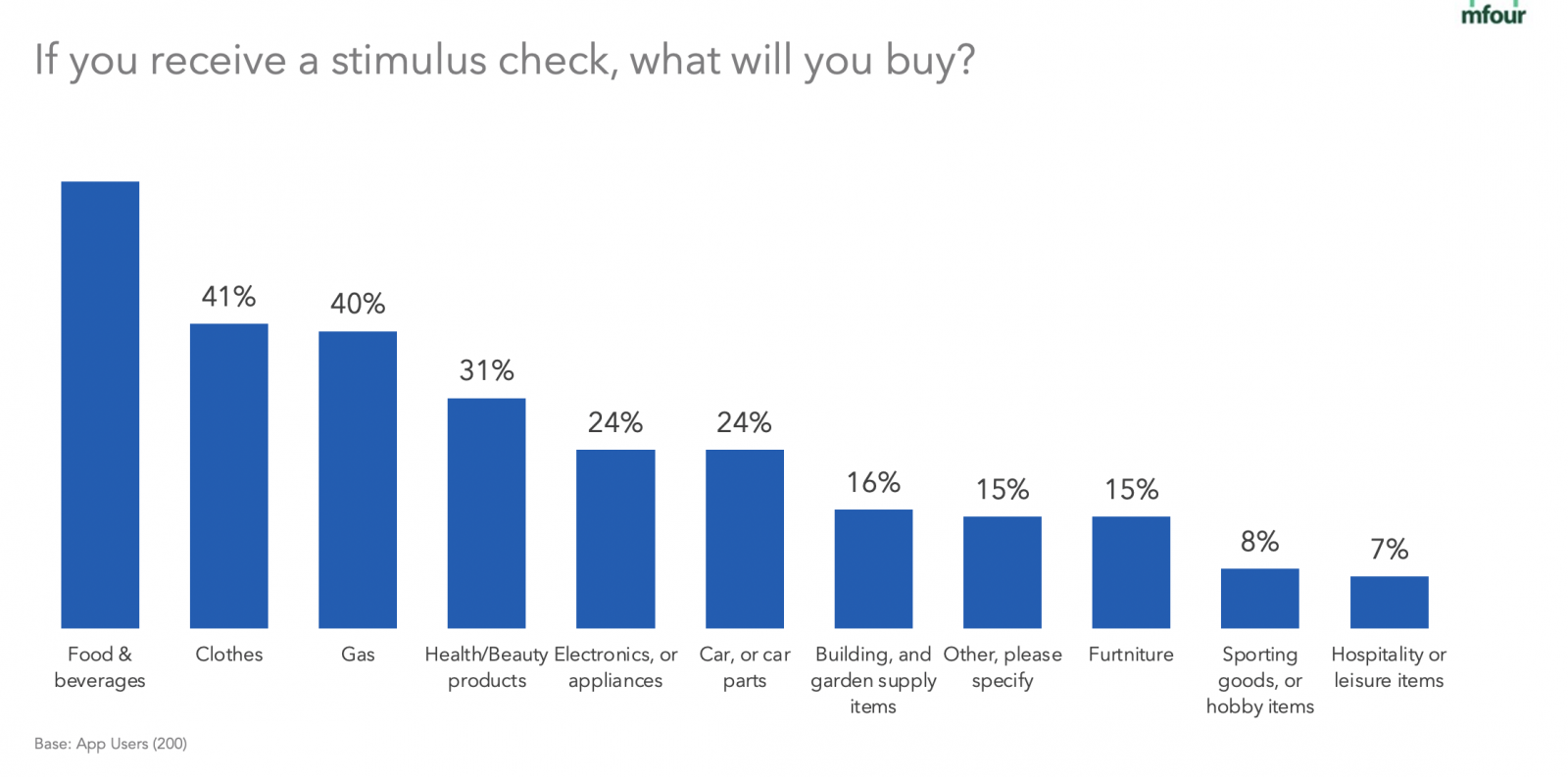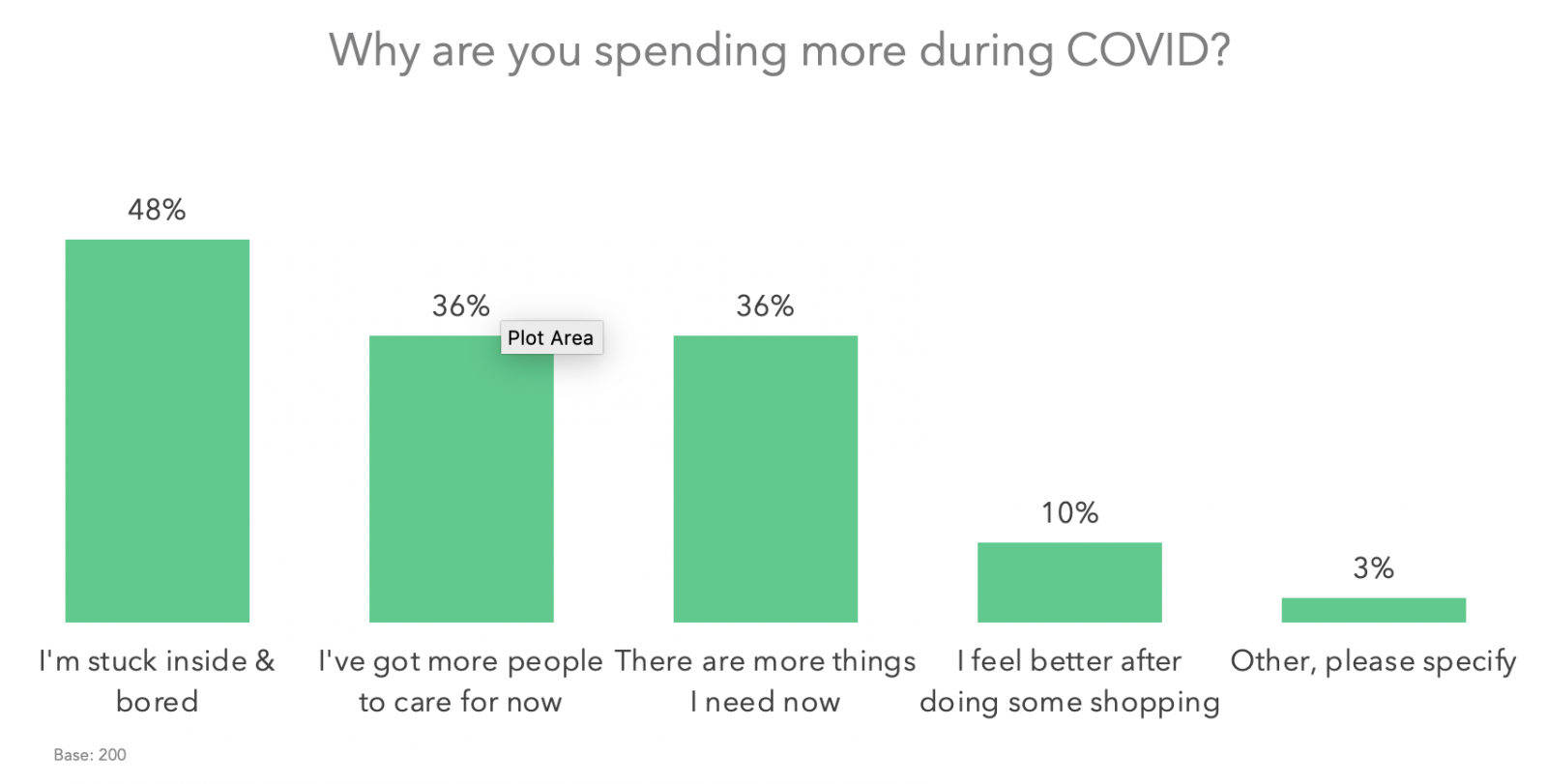Here’s the funny thing about life.
None of us make it out alive. A hard truth to swallow. Which is why we push the thought to the back of our minds—and go about our daily lives.
But, what happens in a pandemic?
Everything changes. You’re instantly aware of life & death. It seeps into every aspect of your decision making. That’s exactly what consumers are dealing with right now. Mortality salience.
And it drastically impacts consumer behavior…which is why you need to know about it.
Why?
Love it or hate it, we tie materialism to success. So what happens when 29% lose a job due to COVID-19? We watched consumers shopping on Amazon and Target. Here’s what we found:
They’re hurting financially, but they’re still shopping—in fact, retail therapy is alive and well.
#1. They’re hurting financially.
This is hard.
We know the pandemic is challenging. And, the reality is, 55% of consumers say their household income is down since COVID-19 started in the U.S., defined as March of 2020.

So, it makes sense that 54% are spending less right now.
Even in the middle of the holidays, that was true—60% changed how much they spent on gifts. Because there’s just not as much to go around as there used to be.
And, it’s why they’re hoping for a stimulus check. After all, 72% need the cash.
#2. But, they’re still shopping.
As of last week1, the IRS started sending out stimulus checks.
Many will be receiving their cash soon. Which means they’ll have access to more funds than they otherwise would have had. It also begs two questions:
- What will they buy?
- And, where will they spend it?
The majority, 56%, plan to spend their stimulus check—rather than save it.
That’s good, the economy could use the help. As for how they’re spending, 81% say they have bills to pay. Their cash will be used to keep the family afloat. It’s not discretionary.
So, what will they buy?
Essential items, mostly. Specifically, food (68%), clothes (41%), and gas (40%). And, where will they spend it?

Now, this is interesting. They’ll be buying online. In fact, 58% will primarily spend their stimulus check online. Why? Well, for 51%, it’s just easier to shop online.
But, wait, there’s more…
Why? 48% said it’s because they got used to shopping online during COVID-19.

Now that’s a behavior shift if ever I’ve seen one.
And it validates everything we’ve seen for the last 10 months. Think about it. Starting a new habit takes 18 to 254 days.2 The U.S. is 300 days into a pandemic. Now, that’s enough to shake things up a bit, but when you add in lockdowns— you get a perfect recipe for change.
The pandemic eradicated our behaviors. What was once normal was now completely inappropriate. And, overnight, it became simpler to buy online than to shop in-store. Any remaining fears of eCommerce were eclipsed by the worries of getting sick inside a store.
Ironic, but true.
#3: Retail therapy is alive and well.
So, it may be a surprise to see people still spending a lot.
But, it shouldn’t. Not really. The fact is when you’re feeling down, you cope. And for 46%, that means spending the same or more than they were before the pandemic. Despite lower income.
Their mortality salience is causing an increase in spending, unrelated to their ability to afford it. So, it’s notable that 49% plan to buy fewer, more high-quality products with their stimulus checks.
Why?
Truth is, American culture is materialistic. And, for many, success is defined as having more stuff. They see luxury products as a way to feel more successful inside of a materialistic society.3
There’s a reason it’s therapeutic.
If you tie success to materialism, then the more you have—the better you feel. And while it’s not that simple to “heal” yourself by purchasing more, it can certainly create a short-term high.
What does it mean for your brand?
You need visibility.
Specifically, you need to know exactly when consumers go online—or in-store—for your brand. Why? To control their outcome—and beat the competition. Start by creating a full map of their actions and activity. Then identify where you can influence them to buy your brand at each stage.
Next, tie in your in-store insights.
That’s how you create an omnichannel approach. By bringing online + in-store behaviors in one. It creates a full picture of your market and differentiates your brand. That’s the best way to compete in a crowded marketplace. It shows consumers you care and makes your brand the natural choice. Need help with your research? Shoot us an email: [email protected].
References:




